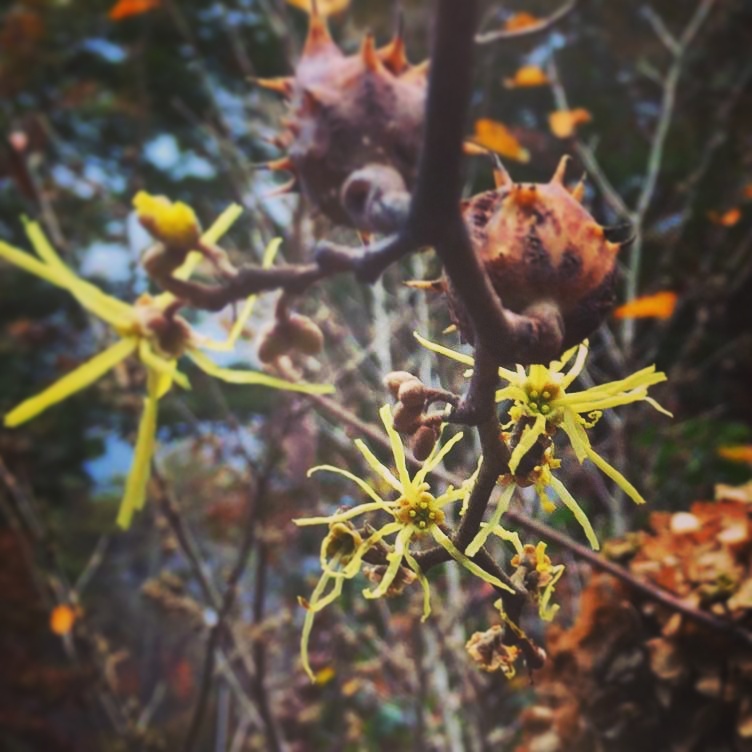“Striped wintergreen’s primary value lies in being a powerful, reliable, year-round medicinal plant. It is a true lifesaving herb in the dead of winter, with a wide range of uses.”
Read moreWild Edible Wednesday 1/23 - Universal Edibility Test
“Today, we’re going to cover one of the most fundamental rules of foraging plants. And really, it’s one of the most useful pieces of wilderness survival knowledge you can have, period.”
Read moreWild Edible Wednesday 1/16 - Dandelion
“The idea that dandelions are a weed is an extremely new one in human history. In America, it only began in the post-WWII years when suburbs began to plague the land.”
Read moreWild Edible Wednesday 1/9 - Leatherleaf Mahonia
“Often overlooked as a bland landscape plant or an semi-invasive shrub, this is, in fact, a valuable medicinal plant with a fascinating backstory that involves plant smuggling and China’s Opium Wars.”
Read more#WildEdibleWednesday 1/2 - Southern Magnolia
“Magnolias aren’t native to the more hilly and mountainous regions of Southern Appalachia, however, they will naturalize here. What that means for us it that nearly every magnolia you see in our area is descended from a tree someone planted.”
Read more#WildEdibleWednesday 11/28 - Red Oak
“Tall, strong, and regal, red oaks grow to between 100’ to 150’ tall, with trunk diameters of 3’ to 4’. Historically, oaks symbolize royalty or authority, hence the use of oak leaves in U.S. military officer’s rank insignia to this day.”
Read more#WildEdibleWednesday 11/21 - Ginkgo
“How tough are ginkgoes? Well, they’re one of the few living things to survive the atomic bomb blast in Nagasaki, Japan in 1945.”
Read more#WildEdibleWednesday 11/14 - Sassafras
“…It only takes a modicum of research and critical thinking to draw the conclusion that the modern claim of sassafras as a dangerous carcinogen is a faulty one based on junk science.”
Read more#WildEdibleWednesday 11/7 - American Sweetgum
“If you were around SARCRAFT in the early days, you would have heard Jonathan and I refer to Sweetgum as the most useless tree in the forest, only good for making toothbrushes (which we’ll touch on in a minute.)”
Read more#WildEdibleWednesday 10/31 - Witch Hazel
“Oh, and about that weird name… why is it witch hazel? Well, there are two explanations….”
Read more#WildEdibleWednesday 10/24 - Dogwood
“During the Civil War, the Yankees put us in a tight spot by blockading our ports, preventing any shipments of supplies or medicine from coming through from the outside. In the Deep South, malaria and yellow fever were serious problems back in that day, and were taking many desperately needed men out of the action on the battlefield.”
Read more#WildEdibleWednesday 10/10 - Goldenrod
“Goldenrod gets a bad rap for causing fall allergies, and it’s not surprising why… the bright yellow flower heads look like pure pollen. However, it’s really a case of mistaken identity….”
Read more#WildEdibleWednesday 10/3 - Mullein
“Mullein has a whole host of great uses for bushcrafters and other outdoorsmen, as well. Its most famous and obvious non-medicinal use is as, well, toilet paper. If you’ve ever felt a mullein leaf, it’s a pretty natural idea to use them for this purpose.”
Read more#WildEdibleWednesday 9/26 - American Beautyberry
“The scientists at Ole Miss who discovered callicarpenal first began their research because their grandparents had all used beautyberry leaves to repel mosquitoes. Lo and behold, they were right.”
Read more#WildEdibleWednesday 9/19 - Muscadine
“The bouquet is as follows: It smacks you in the face with a wallop of intense muscadine flavor followed by a wall of cane sugar, finishing with a pure alcohol burn. There are notes of pure muscadine (obviously), oak, citrus, grape Jolly Rancher, ethanol, and a hint of vinegar. The overall experience is jarring, but not at all unpleasant. I dare California to do better.”
Read more#WildEdibleWednesday 9/12 - Orange Jewelweed
Medicinally, jewelweed really only has one application: Used externally, as a poultice or decoction. However, in this application, it’s fantastic.
Read more#WildEdibleWednesday 9/5 - Kudzu
Although non-native and highly invasive, Kudzu has become as much a part of the South as barbecue, pecan pie, dirt track racing, and smiling and waving at random strangers.
Read more#WildEdibleWednesday 8/22 - Staghorn Sumac
Dramatic and exotic-looking with its bright red fruiting bodies, sumac is part of the Anacardiaceae family of plants that includes cashews, mangoes, and pistachios, as well as Brazilian pepper, poison ivy, and poison oak.
Read more#WildEdibleWednesday 8/15 - Heal All
Like most medicinal herbs, Heal All was cast aside by modern medicine more than a century ago in favor of synthetic pharmaceuticals. Plant medicines have been considered by most physicians and pharmacists in the past hundred years to be unreliable folk tales at best, and dangerous at worst. Even among the herbal medicine community, Heal All was marginalized to a second-tier herb in favor of more powerful and trendy plants. But modern science may be vindicating it.
Read more#WildEdibleWednesday 8/8 - Mountain Mint
The power of this herb can’t be underestimated, as is evidenced by the reverence in which native Americans and pioneers alike held it. The Choctaw considered it sacred, and swore by it as a last-ditch effort to revive the dying… and even raise the dead.
Read more



















